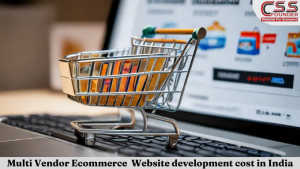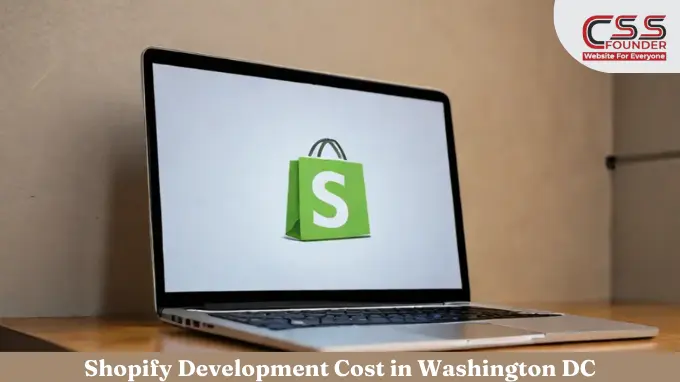In recent years, the Indian ecommerce landscape has experienced explosive growth, with multivendor marketplaces emerging as a popular business model. These platforms allow multiple sellers to showcase their products on a single website, offering consumers a wide variety of choices. For entrepreneurs looking to enter this lucrative market, understanding the costs associated with developing a multivendor ecommerce website is crucial. This article will explore the various factors that influence the development cost of such platforms in India.

Cost Breakdown for multivendor ecommerce website development in India
While exact costs can vary widely depending on the factors mentioned above, here’s a general breakdown of what you might expect to pay for multivendor ecommerce website development in India:
-
Basic MultiVendor Platform (₹5 lakh to ₹15 lakh)
This entry level solution typically includes:
- Core ecommerce functionality
- Basic vendor and product management
- Simple design using premade templates
- Limited customization options
-
MidRange Solution (₹15 lakh to ₹40 lakh)
This option offers more features and customization:
- Custom design and improved UX
- Advanced vendor management tools
- Integration with popular payment gateways and logistics providers
- Basic marketing and SEO tools
- Mobile app development (Android or iOS)
-
Enterprise Level Platform (₹40 lakh to ₹80 lakh or more)
For largescale operations requiring extensive customization:
- Fully custom design and architecture
- Advanced features like AIpowered recommendations and AR
- Scalable infrastructure to handle high traffic
- Comprehensive analytics and reporting
- Multilanguage and multicurrency support
- Mobile apps for both Android and iOS
Factors Affecting Development Cost
-
Platform Choice
The choice of platform significantly impacts the overall cost. Options include:
- a) Custombuilt solutions: Tailored to specific business needs but typically more expensive.
- b) Opensource platforms: Like Magento, OpenCart, or WooCommerce, which offer flexibility and lower initial costs.
- c) SaaS (Software as a Service) solutions: Such as Shopify or BigCommerce, providing readytouse features with subscriptionbased pricing.
-
Features and Functionality
The complexity and number of features directly correlate with development costs. Essential features for a multivendor platform include:
- User registration and profiles (for both vendors and customers)
- Product listing and management
- Shopping cart and checkout process
- Payment gateway integration
- Order management and tracking
- Vendor management system
- Admin dashboard
- Review and rating system
- Search and filter options
Additional advanced features that can increase costs include:
- Multilanguage and multicurrency support
- AIpowered product recommendations
- Augmented reality (AR) for product visualization
- Integration with thirdparty logistics providers
- Advanced analytics and reporting
-
Design and User Experience
A visually appealing and userfriendly design is crucial for attracting and retaining customers. Costs in this area can vary based on:
- Custom design vs. premade templates
- Responsive design for mobile devices
- User interface (UI) and user experience (UX) optimization
- Branding elements and customization
-
Scale and Complexity
The size and complexity of the project influence development time and cost. Factors include:
- Number of product categories and subcategories
- Expected number of vendors and products
- Anticipated website traffic and concurrent users
- Integration with existing systems (e.g., inventory management, CRM)
-
Development Team
The composition and location of the development team affect costs:
- Inhouse vs. outsourced development
- Experience level of developers
- Team size and structure (e.g., developers, designers, project managers)
Additional Costs to Consider
-
Hosting and Infrastructure
Depending on the expected traffic and data requirements, hosting costs can range from ₹5,000 to ₹50,000 per month or more for cloudbased solutions.
-
SSL Certificate
Essential for secure transactions, an SSL certificate can cost between ₹5,000 to ₹20,000 per year.
-
Payment Gateway Integration
Setup fees and transaction charges vary by provider but typically range from 2% to 4% per transaction.
-
Maintenance and Support
Ongoing maintenance, updates, and technical support can cost 15% to 20% of the initial development cost annually.
-
Marketing and SEO
Budget for digital marketing and SEO efforts to promote your platform, which can range from ₹50,000 to several lakhs per month depending on the scale of operations.
Cost Saving Strategies
To optimize development costs without compromising quality, consider the following strategies:
Start with a Minimum Viable Product (MVP)
Concept: The idea behind an MVP is to launch a product with just enough features to satisfy early adopters and to provide feedback for future development. This approach allows businesses to test their product concept with minimal investment.
Benefits:
- Cost Efficiency: By focusing on core functionalities, you save resources on unnecessary features that may not be valuable to your users.
- Faster Time to Market: Launching an MVP allows you to enter the market quickly and start gathering user feedback sooner.
- Risk Mitigation: An MVP minimizes the risk of developing features that users do not want, ensuring that further investment is guided by actual user needs.
- Iterative Improvement: You can continuously improve the product based on real user feedback, making the development process more dynamic and responsive.
Implementation:
- Identify and prioritize the core features that address the main problem or need of your target audience.
- Develop a prototype that includes these features and test it internally.
- Launch the MVP to a select group of users and collect feedback.
- Use the feedback to make data-driven decisions for subsequent development phases, adding features and enhancements that users truly value.
Utilize Open Source Solutions
Platforms like Magento or WooCommerce offer robust multivendor capabilities at a lower initial cost compared to custom-built solutions.
Concept: Open-source solutions provide a flexible and cost-effective foundation for building multivendor platforms. By leveraging pre-built frameworks and modules, businesses can significantly reduce development time and costs.
Benefits:
- Lower Initial Investment: Open-source platforms often require lower upfront costs as they come with many built-in features.
- Community Support: A large community of developers contributes to these platforms, ensuring continuous improvement, security updates, and a wealth of plugins and extensions.
- Scalability: These platforms are designed to handle growth, allowing you to add new vendors and scale your business without major overhauls.
- Customization: Open-source platforms offer a high degree of customization, enabling you to tailor the solution to your specific business needs.
Implementation:
- Evaluate different open-source platforms based on your business requirements and future scalability.
- Customize the chosen platform to fit your brand and specific needs, ensuring it supports the essential features identified for your MVP.
- Integrate necessary plugins and extensions to enhance functionality.
- Continuously monitor and update the platform to leverage new features and maintain security.
Outsource Development
India offers a large pool of skilled developers at competitive rates. Outsourcing can significantly reduce costs compared to hiring an in-house team.
Concept: Outsourcing development work to countries with lower labor costs, such as India, can provide access to a vast talent pool of skilled professionals while keeping expenses manageable. This approach can be particularly advantageous for startups and small businesses.
Benefits:
- Cost Savings: Hiring offshore developers can be significantly cheaper than building an in-house team, reducing overhead costs like office space and benefits.
- Access to Expertise: Many outsourcing firms specialize in specific areas of development, offering expertise and experience that might be hard to find locally.
- Flexibility: Outsourcing provides the flexibility to scale your development team up or down based on project needs without long-term commitments.
- Focus on Core Business: By outsourcing technical tasks, businesses can focus more on strategic planning, marketing, and other core activities.
Implementation:
- Research and select a reputable outsourcing firm with a proven track record and expertise in your required technologies.
- Clearly define your project requirements, timelines, and budget.
- Establish regular communication channels and project management tools to ensure transparency and collaboration.
- Start with a small project or pilot phase to assess the outsourcing firm’s capabilities before committing to larger projects.
Optimize Third-Party Integrations
Carefully select and integrate only necessary third-party tools and services to avoid unnecessary expenses.
Concept: Integrating third-party tools can enhance your platform’s functionality and streamline operations. However, it’s crucial to be selective to avoid bloating your system with unnecessary tools that incur additional costs.
Benefits:
- Cost Management: By choosing only essential third-party services, you can keep your operational costs in check and avoid paying for unused features.
- Improved Performance: A leaner system with only necessary integrations runs more efficiently, providing a better user experience.
- Enhanced Security: Limiting the number of integrations reduces potential security vulnerabilities, protecting your platform and user data.
- Simplified Maintenance: Fewer third-party tools mean less complexity in maintaining and updating your system, saving time and resources.
Implementation:
- Identify the core functionalities that require third-party tools, such as payment gateways, analytics, or customer support.
- Evaluate different options based on cost, features, and ease of integration.
- Implement and test each integration thoroughly to ensure it meets your needs without compromising system performance.
- Regularly review and assess the performance and relevance of each third-party service, discontinuing those that no longer provide value.
Conclusion
Developing a multivendor ecommerce website in India can be a significant investment, with costs ranging from a few lakhs to over a crore of rupees. The final price depends on various factors, including the chosen platform, desired features, design complexity, and scale of operations. By carefully considering these factors and implementing cost saving strategies, entrepreneurs can create a robust multivendor platform that meets their business needs while staying within budget.
As the Indian ecommerce market continues to grow, investing in a well designed and feature rich multivendor platform can provide a strong foundation for long term success. However, it’s crucial to balance cost considerations with the need for a high quality, scalable solution that can adapt to the evolving demands of both vendors and customers in this dynamic marketplace.








